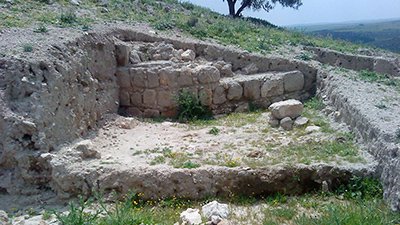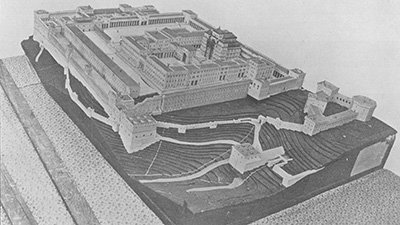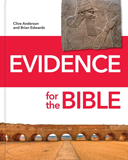Ancient Artifacts or Ancient Toys?
When archaeologists or anthropologists find a mysterious object in a burial chamber or the remains of an ancient village, how do they know what the object was used for? Was it a piece of jewelry, a religious artifact, a tool, or something else entirely? Well, a recent article and a research paper from last October have both brought up an interesting twist to this question: perhaps it was a toy or a child’s tool.1
The Forgotten Children
While it may seem counterintuitive, children (who make up a sizable percentage of any people group’s population) are often not thought of when identifying artifacts, tools, and even pottery. The role of children is also often underappreciated, if not completely overlooked when trying to reconstruct a cultural history from ancient cities or burials. To put it into perspective using modern analogies, imagine a treasure trove of utensils, plates and cups, with several being miniature. We would tend to view those as children’s forks and spoons and cups, not grave goods, symbolic religious artifacts, or aids in the afterlife. But usually archaeologists automatically assign these designations to these items rather than factoring in children’s playthings and tools into the mix. For example, in the Oxford Journal of Archaeology, author Michelle C. Langley cites several anthropological studies including one in the Canadian arctic conducted by De Laguna back in 1932 who does mention that “almost all the Eskimo carvings of the human figure appear to be children's toys, except for a few puppets used by shamans,” with a similar statement regarding carved animal figures.2 But it is still common to list most or all figurines of the Dorset3 and Thule4 periods as shamanistic.
Dr. Langley examined the artifacts at several cultural sites, but more specifically narrowed her focus to some Magdalenian sites, (mostly in France, northern Spain, Belgium, and Germany) conventionally dated to 21,000–14,000 BP. From a creation context we would view these sites as Ice Age (c. 2300–1800 BC). Some of the sites have been excavated as long as 90 years ago, with many of the artifacts housed in the French National Archaeological Museum (Musée d’Archéologie Nationale).
Toys, Optical Illusions, and Ice Age Movies
Some examples that Dr. Langley pointed out in her paper included miniature versions of an object thought to be either a spear straightener or leather thong tool. Both were found buried in the same grave, but the miniature version is not as well designed and more closely resembles a bird head.5 It also shows more extensive handling and less ornate carving. Another example is a reindeer antler carved into a depiction of a cave lion,6 which has several perforations and shows signs of polish and wear. Another item that Dr. Langley mentioned (see an embedded video in the Science News article)7 is the bone disk rondelle, (a coin-shaped artifact, in this case made of bone, usually with a hole or holes drilled into it) which has a carved image of a deer-like animal in two phases of movement, one on each side.
Rondelles have been found in several Magdalenian sites and were usually interpreted as pendants or buttons. But researchers Marc Azéma and Florent Rivère suggested that these rondelles were most likely thaumatropes (a type of device designed to create an optical illusion) purposefully designed as toys.8 In that same paper, they also suggested that several Magdalenian cave paintings were drawn in such a way as to showcase movement of the animal or animals depicted. This illusion of movement would have been accentuated by a flickering torch or lamplight. The accompanying video to their paper shows how these optical illusionary effects are achieved.9 Azéma and Rivère, in describing the cave art animation, stated,
This was achieved by showing a series of juxtaposed or superimposed images of the same animal. That such animation was intentional is endorsed by the likely use of incised disks as thaumatropes.10
Perhaps then it is not just the disks that were designed as toys, but also the cave paintings themselves, where children of the tribe were at least part of the targeted audience. The walls then become not only the “motion picture” but also the storybook and maybe the hunting “training manual” for the adults and the children as well. Perhaps, just as murals and tapestries over the centuries have been crafted to commemorate momentous events, these cave murals served to illustrate and recall great hunts.
Tools, Hand-Me-Downs, and Training
In fact, Dr. Langley seems to think that many of the more crudely worked or broken antler projectiles may in fact have been either made by children or passed along to children once they were no longer useful for hunting.11 Some extended quotes from her paper provide unique insight here:
We cannot assume that all Palaeolithic portable art pieces had a purely adult/aesthetic function simply owing to the effort, time and/or skill that went into their creation. Magdalenian material culture, being renowned for its decorative elements, was generated by communities in which such items were not “art,” but rather artful integration of entangled material and social factors. As part of this artful community of practice, it would follow that Magdalenian children would have played with items more ‘beautiful’ than those produced by less decorative-intense communities. Indeed, just because children can and will play with natural unaltered items, this does not mean that they did not also own and play with heavily-worked and beautifully-made toys. Furthermore, such artful items are conceivably perfect for “fantasy play”—that which develops creativity, behavioural plasticity, imagination and planning. . . .
Additionally, playthings are often presented to children as gifts, serving as an important bonding mechanism between adults and children, with this exchange often occurring as part of important family-centered rituals, such as festivals and personal milestones. Gifts in these exchanges can include expensive or otherwise elaborate items, and some of the Magdalenian portable artworks may represent such a gift.
Along other lines, it may be that such items were not made specifically for children, but instead entered a ‘toy stage’ at the end of their use-life in the adult world, but prior to final abandonment. A broken, worn or unvalued object may be deliberately passed on to a child. . . .
On the other hand, the high degree of polish observed on the miniature bâton percé and portable art presented herein, may indicate a child's intensive and prolonged play with that item (think simply of modern beloved children's toys), and might prove a valuable factor in future identification of items utilized by children.12
Revisiting And Reimagining Archaeological Artifacts
Dr. Langley mentions that considering these factors may cause a philosophical paradigm revision. Perhaps they should portray the number of objects and artifacts recorded in journal papers as representing large numbers of children in the community as opposed to high frequency of ritualistic activity. Failure to do so potentially skews the picture of family dynamics in ancient communities. Furthermore it erases an entire category of objects from archaeological consideration, namely dolls and toys, which are prevalent in every culture. Some of Dr. Langley’s final points are worth considering as a cautionary tale to all archaeologists.
Thus it seems, as is the case with parietal art. . . . that the possible role of children in the impetus, creation and/or use of Magdalenian portable art has been forgotten in favour of the popularized image of men creating such images while women and children simply look on. Furthermore, the common practice of researchers dismissing the idea that an artefact may have belonged to [a] child if it could have any other (adult) function has undoubtedly resulted in children being erased from this archaeological record.
With imitative games—playing house, playing hunting, playing ceremony—central to all hunter-gatherer children in recent times, it is a safe assumption that these phenomena were present amongst Magdalenian children also. Consequently, researchers can expect miniatures and repurposed adult items to be present in archaeological deposits and that the frequency of these playthings will be highest in locations where groups of children congregated. Aggregation sites, it can then be suggested, are most likely to produce artefacts associated with children in play. Consequently, material from such sites should be re-examined and reinterpreted in light of children.13
Think About the Children!
It is evident then that all manner of unintentional biases can creep in when trying to interpret historical settings and ancient communities. Something so basic as considering that a third to half of the population of an ancient society at any given time are children seems to have been a problem in many reconstructions of these ancient communities. While we would disagree with the dates assigned to the Magdalenian communities in these cited papers and articles, we definitely are encouraged by their willingness to look at previous work in the field and reexamine data, which may have been skewed because of faulty assumptions.
While life in the Ice Age may have been particularly difficult in glaciated Europe, these were still post-Babel peoples who had families to care and provide for. These were people who not only wanted their children to grow up healthy and strong, but also wanted their children to have times of joy and playfulness. They had skills and life lessons that they wanted to pass on to the next generation, so they used their God-given talents and imagination to do so in a cold and unforgiving landscape.
What Can We Learn from This Study?
Likewise, we as Christians also have the potential to overlook the importance of children as we examine history, or even in our lives and the life of the church. We can be busy serving, studying, working, and providing. We can get caught up in ourselves and think in terms of only what the adults need. But what did Jesus say when the disciples wanted to keep children from “bothering” the Lord?
But Jesus called them to Him and said, “Let the little children come to Me, and do not forbid them; for of such is the kingdom of God.” (Luke 18:16, NKJV)
While the concept of play and childlike wonder and imagination are not often mentioned in Scripture, when they are, they paint vivid pictures. Probably the most famous passage is when the new heavens and new earth are created (Isaiah 11, cf. Isaiah 65:17, 25). A time when the curse is removed, and everything will return to its Eden-like state. At that time, a child can walk with a lion and play with cobras, and not have to worry about injury. There won’t be whispered warnings about dangerous animals and paintings of the latest leopard attack on an antelope. But there will be young children playing without fear and everyone will be basking in the knowledge of the Lord.
The wolf also shall dwell with the lamb,
The leopard shall lie down with the young goat,
The calf and the young lion and the fatling together;
And a little child shall lead them.The cow and the bear shall graze;
Their young ones shall lie down together;
And the lion shall eat straw like the ox.The nursing child shall play by the cobra’s hole,
And the weaned child shall put his hand in the viper’s den.They shall not hurt nor destroy in all My holy mountain,
For the earth shall be full of the knowledge of the Lord
As the waters cover the sea. (Isaiah 11:6–9 NKJV)
Footnotes
- Bruce Bower, “Ancient Kids’ Toys Have Been Hiding in the Archaeological Record,” Science News, February 6, 2018, https://www.sciencenews.org/article/ancient-toys-kids-archaeological-record; and Michelle C. Langley, “Magdalenian Children: Projectile Points, Portable Art and Playthings,” Oxord Journal of Archaeology 37, no. 1 (February 2018): 3–24, doi:10.1111/ojoa.12128.
- Langley, “Magdalenian Children.”
- Canadian Museum of History, “Lost Visions, Forgotten Dreams,” http://www.historymuseum.ca/cmc/exhibitions/archeo/paleoesq/pem01eng.shtml.
- Canadian Museum of Nature, “Heritage, History and Art,” http://www.virtualmuseum.ca/edu/ViewLoitLo.do;jsessionid=441F83A7492160FF662B6177875008C9?method=preview&lang=EN&id=13937.
- Langley, “Magdalenian Children,” Figure 4.
- Ibid., Figure 7b.
- Bower, “Ancient Kids’ Toys Have Been Hiding in the Archaeological Record.” The version shown in the video is a recreation.
- Marc Azéma and Florent Rivère, “Animation in Palaeolithic Art: a Pre-Echo of Cinema,” Antiquity 86 no. 332 (June 2012): 322, doi:10.1017/S0003598X00062785.
- Ibid, accompanying video at http://antiquity.ac.uk/projgall/azema332/.
- Ibid., 323.
- Michelle C. Langley, “Magdalenian Children: Projectile Points, Portable Art and Playthings,” Figures 5 and 6.
- Ibid., 15–16.
- Ibid., 18.
Recommended Resources

Answers in Genesis is an apologetics ministry, dedicated to helping Christians defend their faith and proclaim the good news of Jesus Christ.
- Customer Service 800.778.3390
- © 2024 Answers in Genesis








